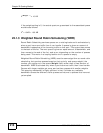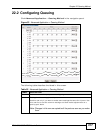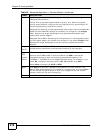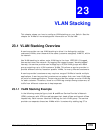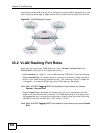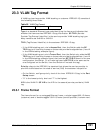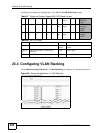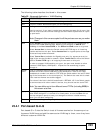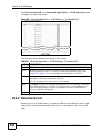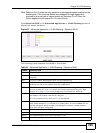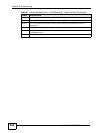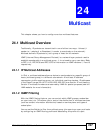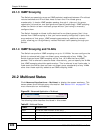
Chapter 23 VLAN Stacking
XGS-4526/4528F/4728F User’s Guide
221
23.3 VLAN Tag Format
A VLAN tag (service provider VLAN stacking or customer IEEE 802.1Q) consists of
the following three fields.
Type is a standard Ethernet type code identifying the frame and indicates that
whether the frame carries IEEE 802.1Q tag information. SP TPID (Service
Provider Tag Protocol Identifier) is the service provider VLAN stacking tag type.
Many vendors use 0x8100 or 0x9100.
TPID (Tag Protocol Identifier) is the customer IEEE 802.1Q tag.
• If the VLAN stacking port role is Access Port, then the Switch adds the SP
TPID tag to all incoming frames on the service provider's edge devices (1 and 2
in the VLAN stacking example figure).
• If the VLAN stacking port role is Tunnel Port, then the Switch only adds the SP
TPID tag to all incoming frames on the service provider's edge devices (1 and 2
in the VLAN stacking example figure) that have an SP TPID different to the one
configured on the Switch. (If an incoming frame’s SP TPID is the same as the
one configured on the Switch, then the Switch will not add the tag.)
Priority refers to the IEEE 802.1p standard that allows the service provider to
prioritize traffic based on the class of service (CoS) the customer has paid for.
• On the Switch, configure priority level of the inner IEEE 802.1Q tag in the Port
Setup screen.
• "0" is the lowest priority level and "7" is the highest.
VID is the VLAN ID. SP VID is the VID for the second (service provider’s) VLAN
tag.
23.3.1 Frame Format
The frame format for an untagged Ethernet frame, a single-tagged 802.1Q frame
(customer) and a “double-tagged” 802.1Q frame (service provider) is shown next.
Table 56 VLAN Tag Format
Type Priority VID






